Live plants are important home accessories and — sometimes they can even become key design elements on their own. Next time you see an unused corner or empty shelf in your home, consider bringing in a plant to fill the space. Five reasons why:
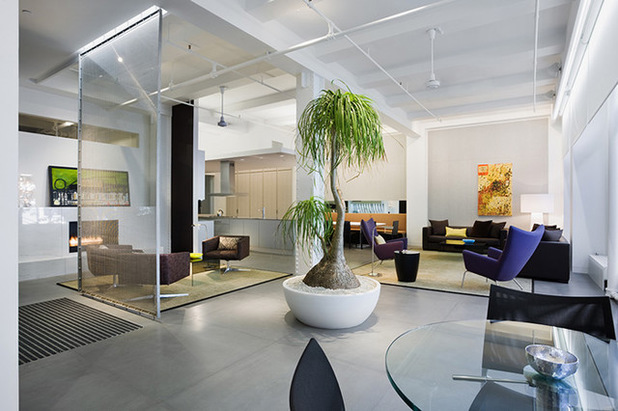
WXY architecture + urban design
Plants can serve as functional design elements. Many homes in today's suburban neighborhoods have great rooms. While most homeowners love the idea of a great room, it can also be a curse; it's hard to know where one functional space ends and the next one begins. Large indoor shrubs or trees are the perfect solution. Use them as room dividers or to flank an area to create a more restricted passage.
By using a plant for this purpose you infuse life into the space and avoid making the divider feel too heavy. If you're daring, place a potted tree in the middle of large open area to create a soft room divider. The sheer size and shape of this potted tree adds a real punch to this interior.
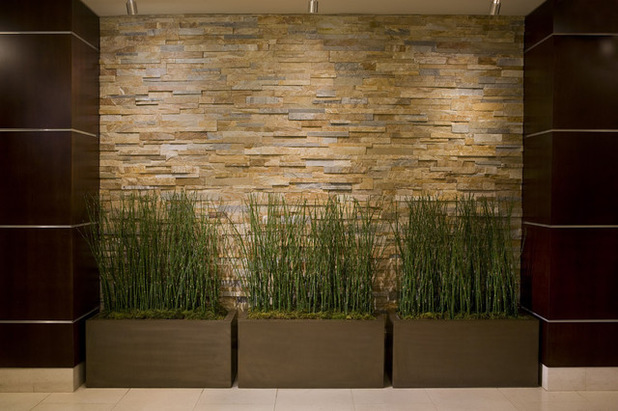
Design West
Plants soften architectural elements. Natural materials provide textures that are difficult to recreate. Sometimes there is no substitute for the real thing. Here a structured planting of reeds plays an important role in softening the stone wall and wood columns. This concept might be used around large windows or on either side of a front door. Wherever the location, the softness of the planting keeps the hard surfaces from overwhelming the space and making it feel cold.
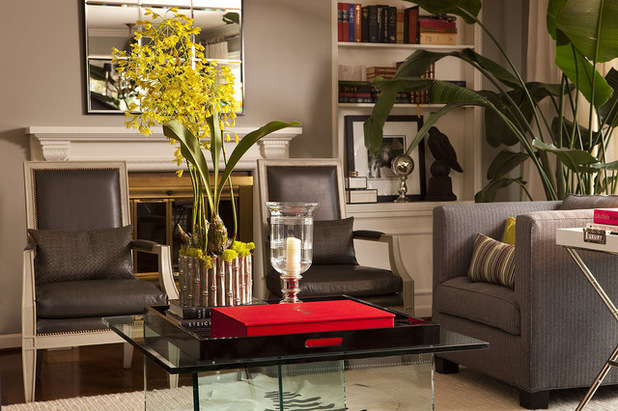 Plants fill a corner with life.
Plants fill a corner with life. Portland designer Garrison Hullinger is a dear friend of mine and is great at using plants in his interiors. For those corners in your home that don't seem right for a piece of furniture, consider a large plant to fill the space. By placing this plant in the corner behind the chair, the room feels intimate without being crowded by extra furniture. This type of arrangement works best when the location is out of high-traffic areas.
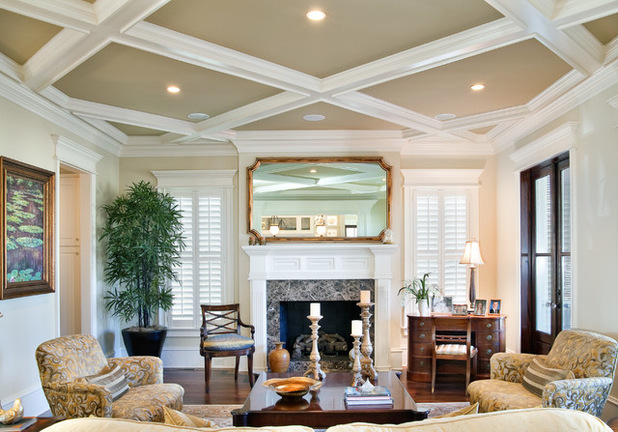
Max Crosby Construction
Plants can balance out your design. The right plant in the wrong place will throw off the look and feel of an entire room. It might be too small in a larger space, or simply have too much volume and overwhelm nearby design elements. When selecting a large houseplant, consider volume as well as overall height and width. A really full tree in front of a window may block too much natural light. And you don't want to have to brush aside fronds from a nearby plant to carry on a conversation with your friends.
By taking height, width and volume into consideration, you'll select a plant that fills the space perfectly. For example, this tall, full tree is used to balance out the traditional writing desk and accessories on the other side of the fireplace. Proportion isn't always about items the same size; it's more about balancing weight.
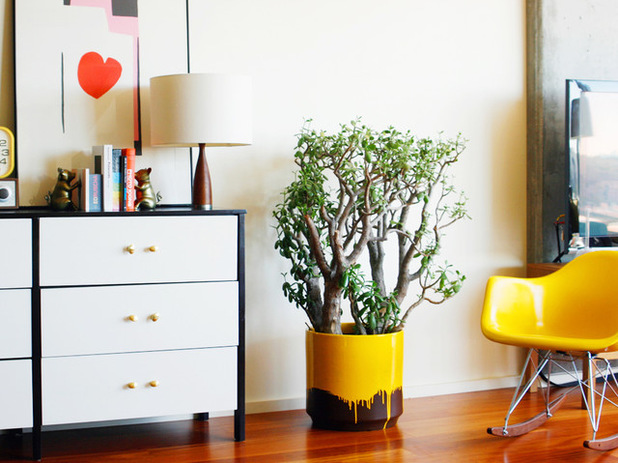
Dabito
The planter is another opportunity for design. A paint-dipped pot makes a statement next to the Eames rocker. Any other pot would have just disappeared.
Access to well-designed planters is considerably easier now than it was years ago. There are probably several garden stores or other design resources in your city that have a broad selection of interesting planters to add to your overall design.
Consider specifying colored planters to work with your color story, or metal planters for a more industrial feel. Also, with the improvement in resin technologies, there are now plenty of planters that look like stone at tenth of the weight.





